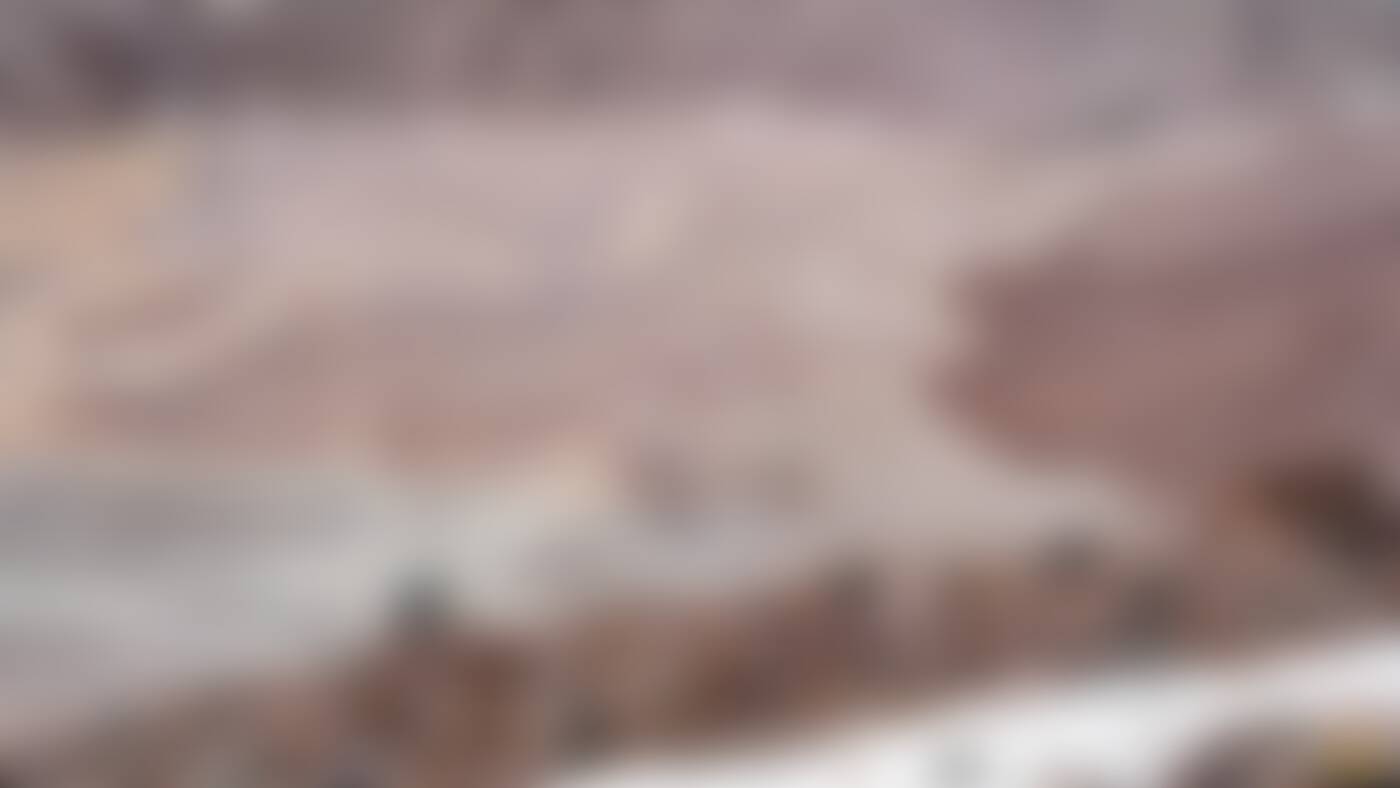
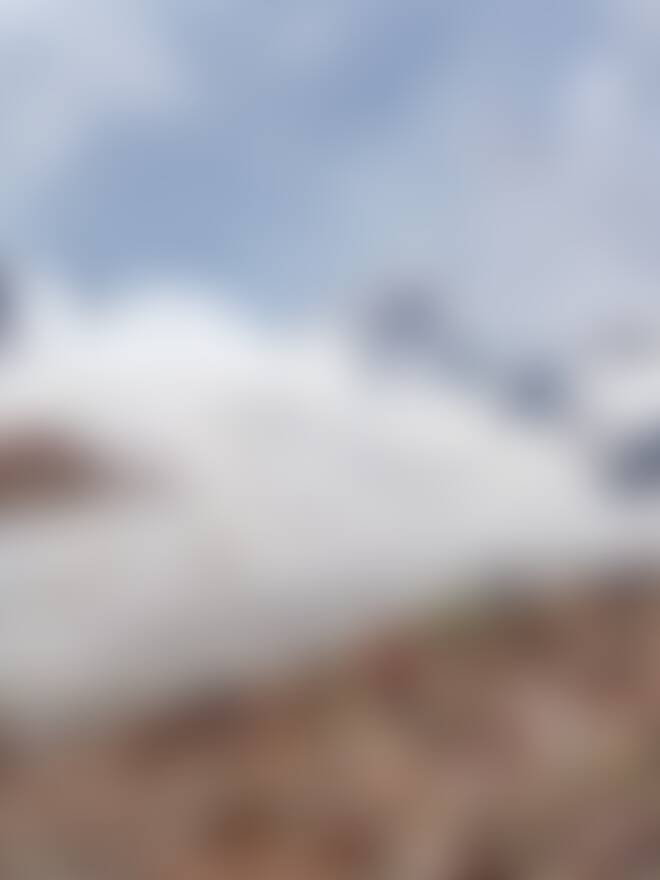
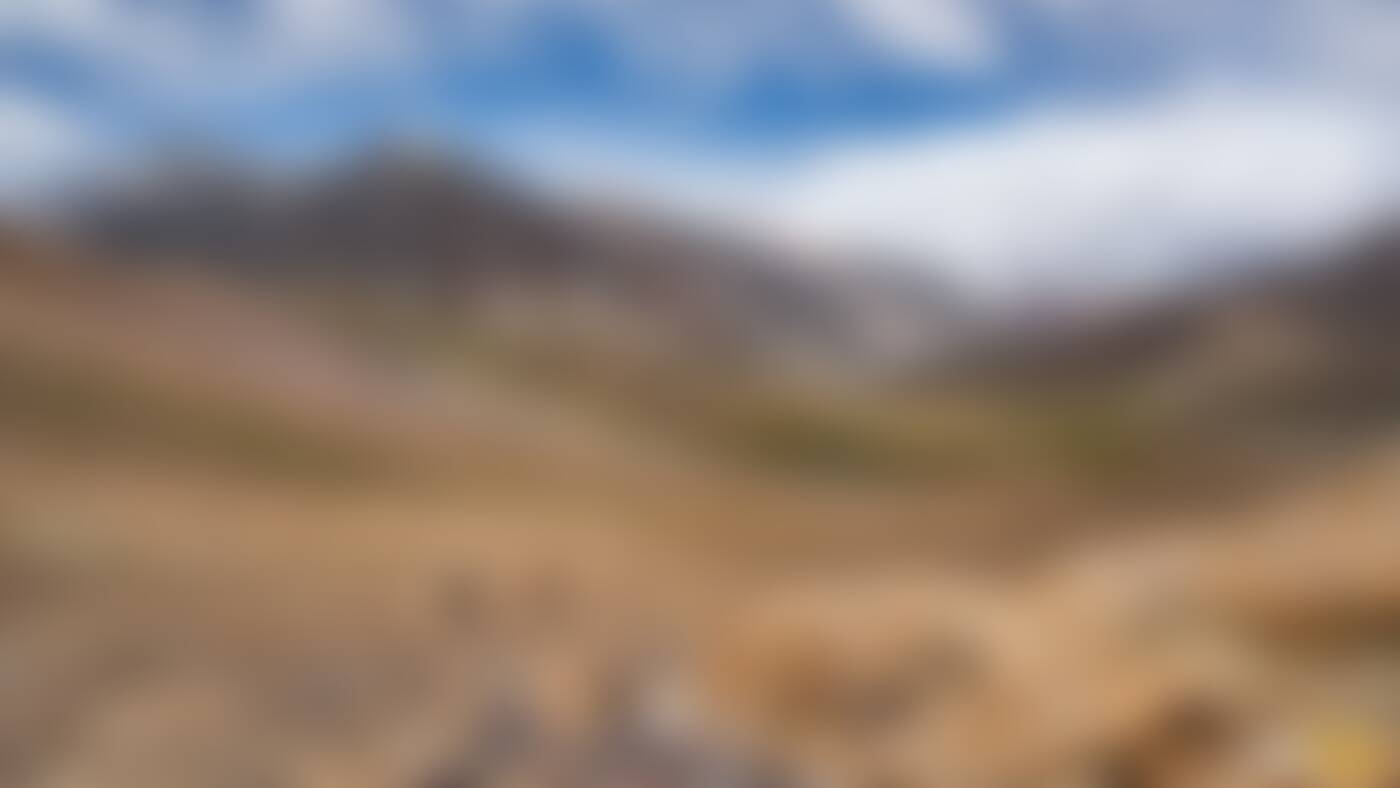
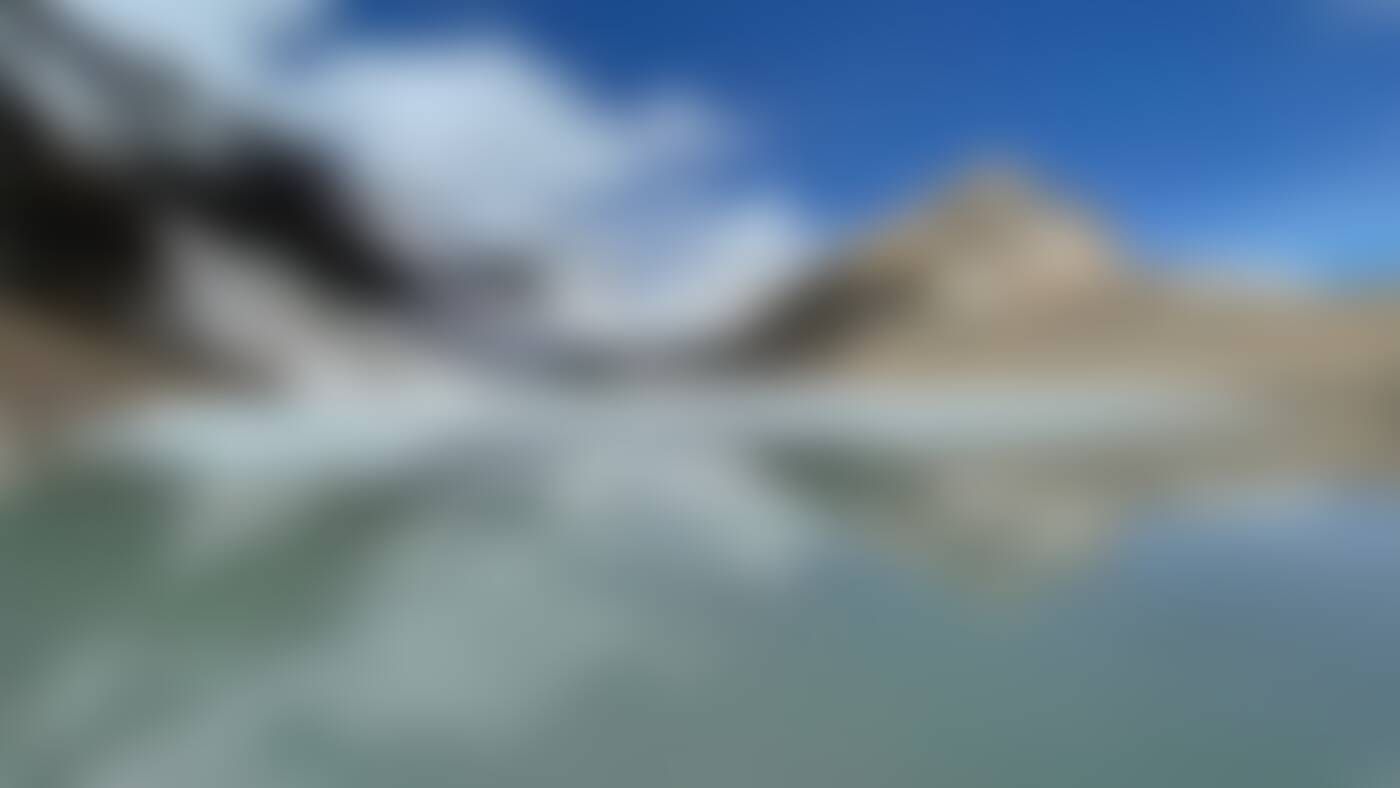
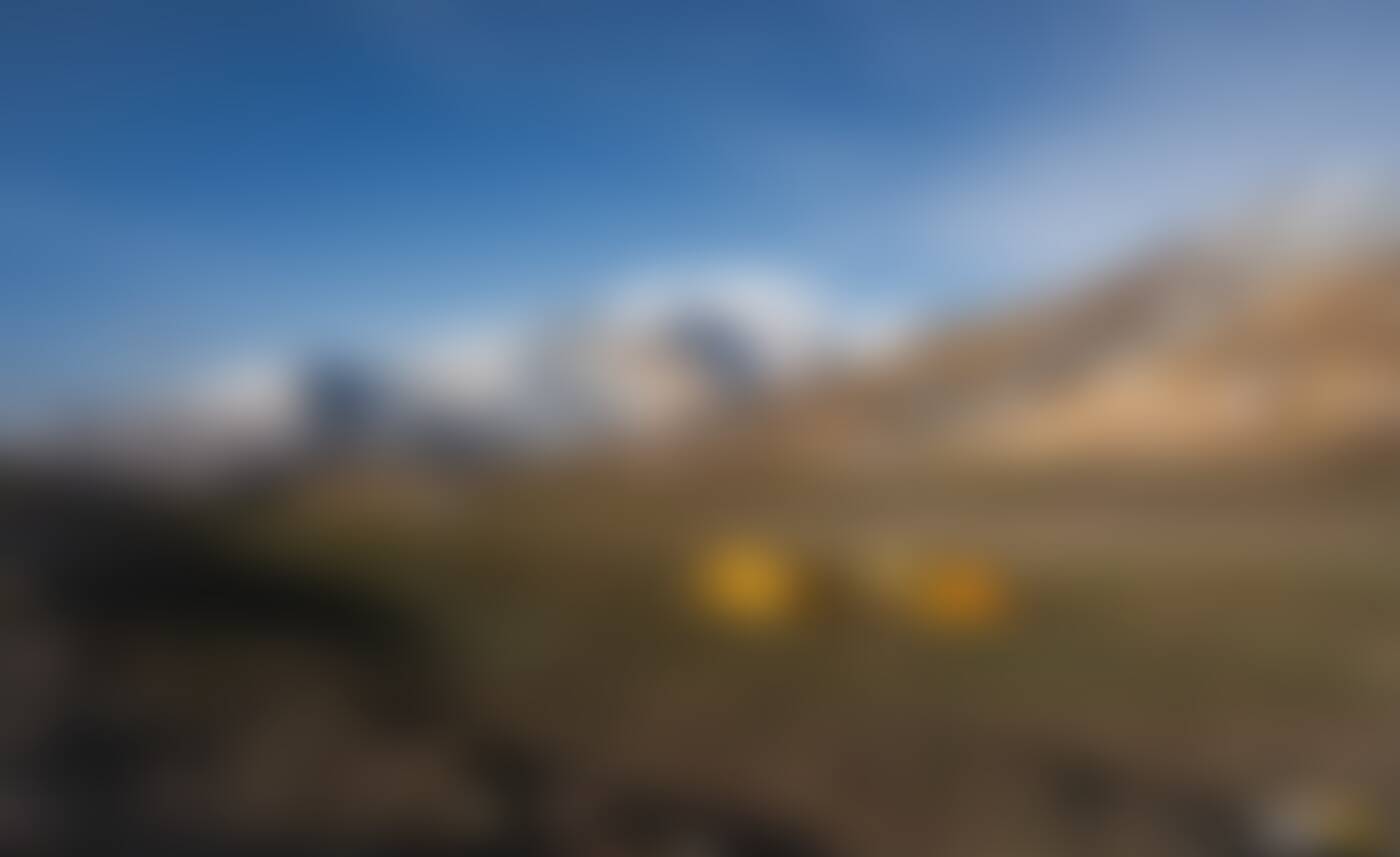
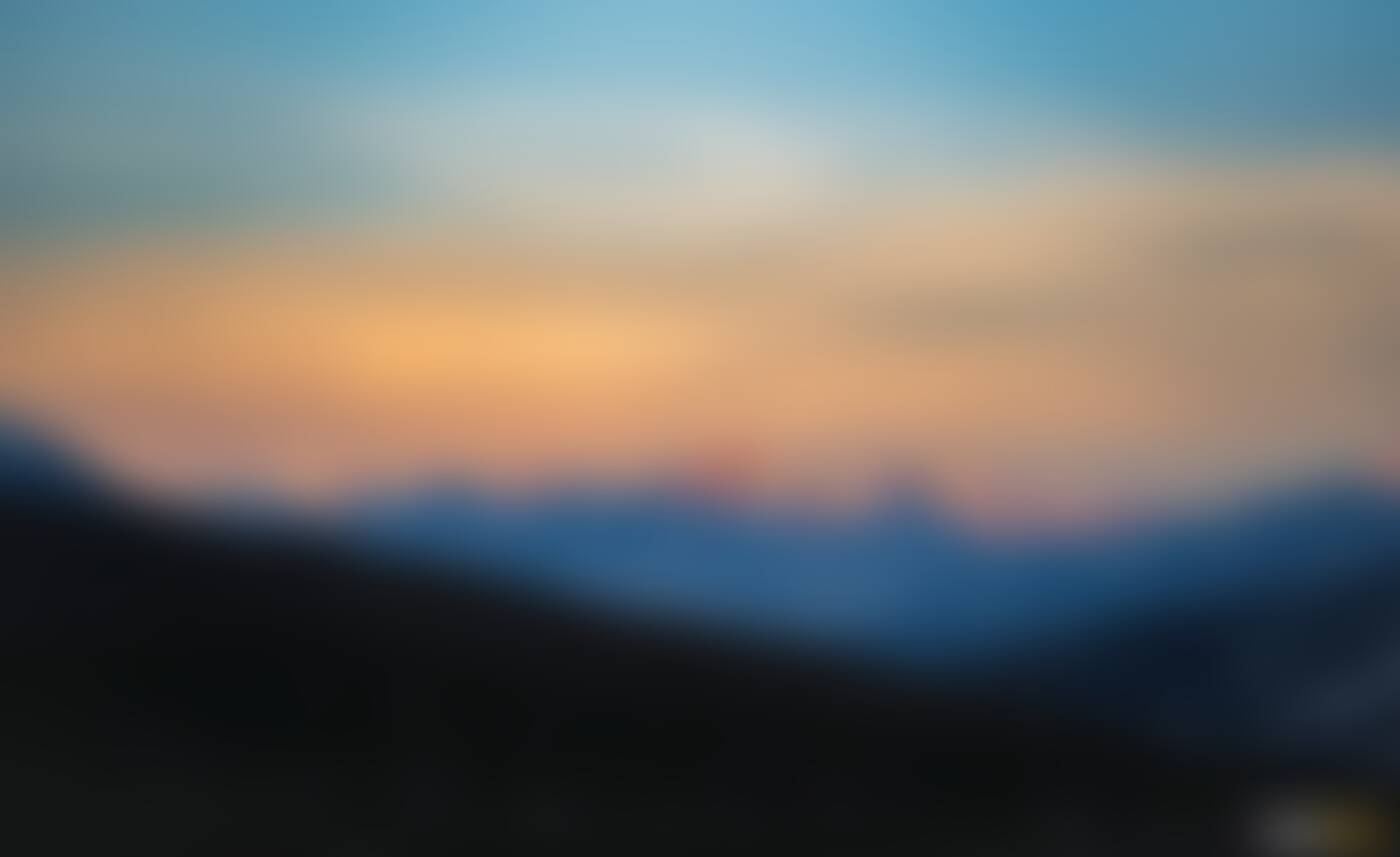
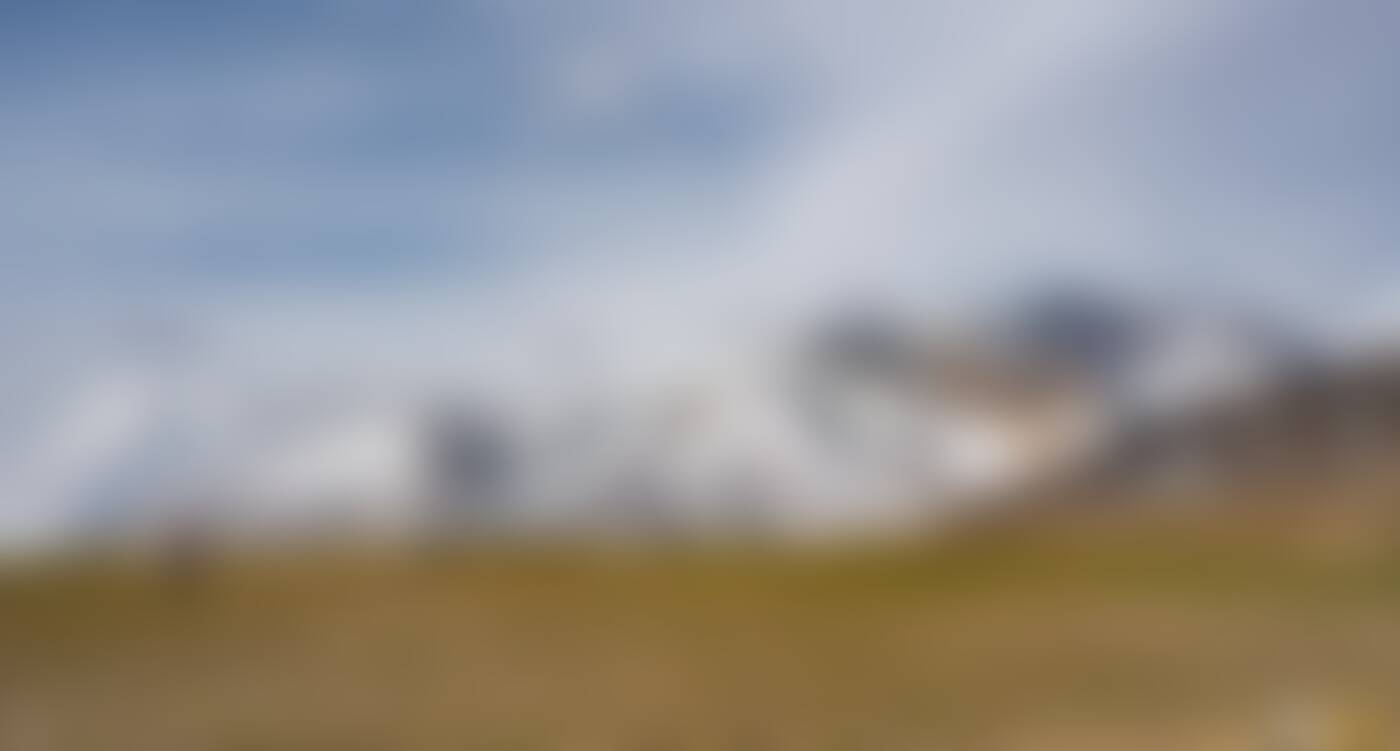
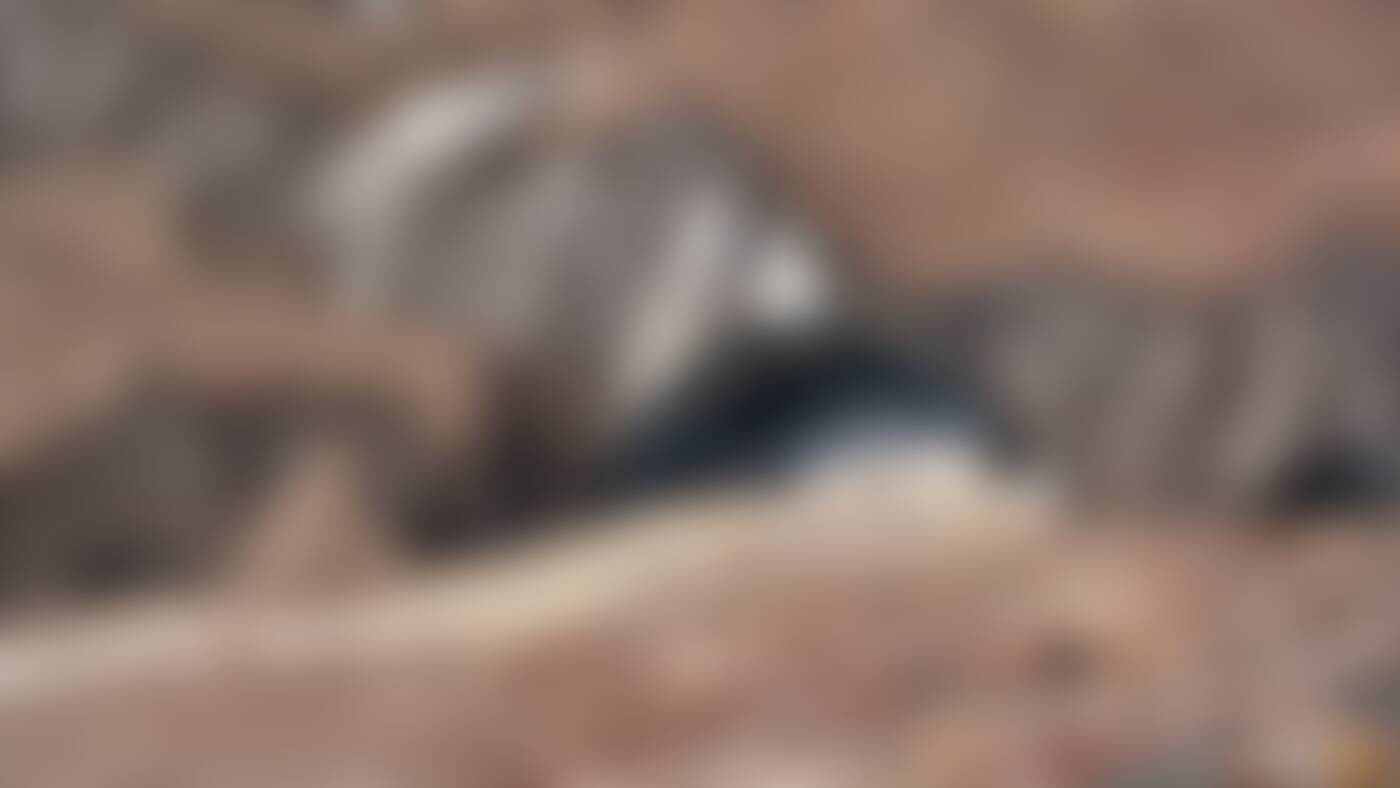
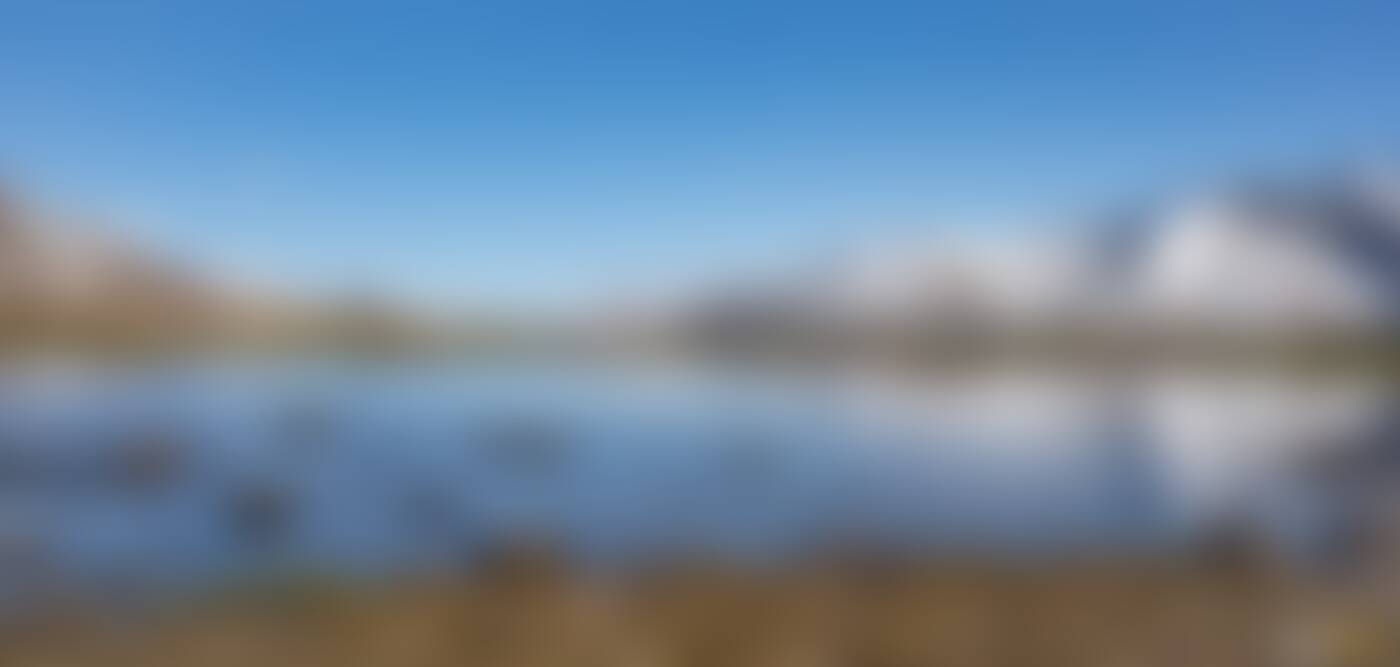










CHANDRABHAGA GLACIERS TREK
A Raw Adventure in the Cold Deserts of Lahaul
Pilot Groups for this trek are full. But if you are looking for an adventure in Lahaul-Spiti, we recommend the Kanamo Peak Trek instead
With an enthralling summit climbing to 19,500 ft set against the beautiful Spiti landscape, it's an incomparable adventure. We are running just 2 Pilot Groups for it as well.View the Kanamo Peak Trek
TREK DIFFICULTY
Moderate-Difficult
TREK DURATION
7 days
HIGHEST ALTITUDE
17,200 ft
TOTAL TREK DISTANCE
32 km
BASECAMP
Indiahikes Jungle Line Campus, Manali, Himachal Pradesh
ACCOMMODATION TYPE
Homestay and Tents
PICKUP DETAILS
Beas Bridge, Manali at 11 AM
DROPOFF DETAILS
Beas Bridge, Manali at 7 PM
A Raw Adventure in the Cold Deserts of Lahaul
For years, we’ve wanted trekkers to experience the stark, raw beauty of India’s high-altitude cold deserts. Lahaul, tucked in the rain shadow of the Pir Panjal Range, held the key with vast open landscapes and towering glaciers.
But most treks here climbed too fast to 18–19,000 ft, making them inaccessible to many. That changed when we found the Chandrabhaga Glaciers Trek. It’s a rare trail that starts high, near 16,000 ft, and still stays within a safe altitude window. The trek never climbs beyond 17,200 ft and within this narrow band, it packs a magical variety of landscapes— sprawling meadows, glacial valleys, moraine belts, and twin alpine lakes.
The Chandrabhaga Glaciers Trek starts at the high mountain pass of Baralacha La plunging you straight into the raw, high-altitude wilderness of Lahaul. You trek through vast alpine landscapes that stretch as far as the eye can see. These rugged, high-altitude plateaus shift colours through the day, glowing in surreal hues of orange, purple, and gold under the changing mountain light.
Chandrabhaga Glaciers Trek - Complete Trek Information
We have always wanted trekkers to be well-informed before they go on a Himalayan trek. Knowledge is the difference between a safe trek and a dangerous one. It’s also the difference between a wholesome experience and a superficial experience. Use this section to learn about the Chandrabhaga Glaciers Trek. But there's a little more we want to tell you about this trek.
At Indiahikes, this trek already has a soft corner in our hearts. This is not only the highest we go on any Indiahikes Trek in India, it is also the first official Indiahikes Trek which was explored by a team of InTrek Club Members. Seven members of our Bangalore chapter Kaidzohar, Kartik, Nagavishnu, Shreya, Shivam, Sumedha and Sushanth, were instrumental in documenting this trek along with Indiahikes Team Members, Pritish and Upayan.
Day 1
Reach the Indiahikes Jungle Line Campus at Manali
Reporting Time: 11 am | Pick Up Point: Beas Bridge, Manali
Pick-up will be arranged from Beas Bridge, Manali to Indiahikes Jungle Line Campus at 11 am. Collect your rentals, sort out the cloakroom and attend a detailed trek briefing. If time permits, go on short hikes around the campus or visit the historic town of Naggar.
The cost of this pick-up is already included in your fee if you have booked Indiahikes transport for this trek. If you have not opted for Indiahikes transport, you'd need to reach the Indiahikes Jungle Line Campus on your own.
Day 2
Drive from Manali to Darcha
Drive Distance: 120 km | Drive Duration: 4 hrs | Altitude Gain: 6,000 ft to 11,000 ft
Embark on a scenic drive to Darcha, crossing the iconic Atal Tunnel and passing through the picturesque towns of Sissu and Keylong. The route winds alongside the majestic Chandrabhaga River, cutting through the stark and stunning cold desert landscapes of the Lahaul-Spiti region.
The cost is Rs.1900 (additional 5% GST) per trekker one-way from Manali to Darcha. The pick-up from Beas Bridge is included in this cost. These are non-AC vehicles. Please pre-book your transport through the dashboard before your trek.
Day 3
Acclimatisation Day at Darcha
Darcha is a beautiful little hamlet situated at the confluence of three glacial streams– the Bhaga, the Jankar and Yoche. Take a short day-hike, experience the local culture and enjoy Sunset from the riverbed. This day is meant for you to relax and allow your body to acclimatise to the high altitude. So make sure that you hydrate well and do not exert yourself too much.
Day 4
Drive to Baralacha La. Trek to Lunar Campsite via Paralatse La.
Drive Distance: 50 km | Drive Duration: 2 hrs | Altitude Gain: 11,000 ft to 16,000 ft
Trek Distance: 6 km | Trek Duration: 4 hrs | Altitude Gain: 16,000 ft to 16,100 ft via 16,250 ft
The exhilarating drive to Baralacha La is where the journey ends for most people who visit Lahaul Spiti. But your trek just starts there. Walk through the vast, open cold-desert landscape to your first campsite.
Day 5
Trek to Chandrabhaga Glaciers Viewpoint. Return to Lunar Campsite via Chandra River Origin Point.
Trek Distance: 11 km | Trek Duration: 8 hrs | Altitude Change: 16,200 ft at Glaciers Viewpoint and 15,500 ft at Chandra River
Prepare for a long day of trekking. Leave your backpacks at the campsite and carry only your day-pack. Trek through meadows, and then through scree and boulders to reach the stunning viewpoint. On your way back, experience standing at the glacial snout of the mighty Chandra River. Even though the change in altitude is not much, prepare for strenuous ascents and descents.
Day 6
Trek to River Campsite via High Altitude Glacial Lakes, Kya Tso and Ga Tso.
Trek Distance: 10 km | Trek Duration: 8 hrs | Altitude Change: 16,100 ft to 16,200 ft via 17,200 ft
Today’s trek takes you to two stunning high altitude glacial lakes, Kya Tso and Ga Tso in the cradle of glaciated mountain slopes.
Day 7
Trek to Baralacha La Roadhead. Drive to Manali.
Trek Distance: 5 km | Trek Duration: 3 hrs | Altitude Loss: 16,200 ft to 16,000 ft
Drive Distance: 150 km | Drive Duration: 6 hrs | Drop-off Time: 7 PM | Drop-Off Point: Beas Bridge, Manali
Trek to Baralacha La roadhead and drive back to Manali. Return your rentals and collect your cloakroom luggage from Indiahikes Jungle Line Campus before heading to Beas Bridge, where you’ll be dropped off.
The cost of transfer is Rs.1900 (additional 5% GST) per trekker one-way from Baralacha La to Manali. These are non-AC vehicles. Please pre-book your transport through the dashboard before your trek.
IMPORTANT POINTS
Day 1: Reach the Indiahikes Jungle Line Campus at Manali
Reach the Indiahikes Jungle Line Campus, a lively community campus, exclusively for Indiahikes trekkers. Stay in comfortable Swiss tents set in this quiet corner amidst the mountains. At the centre of this campus is the Urjino Café, a warm, welcoming space where trekkers gather, chat, play games, or just enjoy a quiet cup of tea. The whole setup is designed to help you connect with people, with nature and even with your own self.
Settle in and have a hot lunch. After that, go through the safety check-in. This is especially important here. The Chandrabhaga Glaciers Trek climbs higher than any other Indiahikes trek. So vitals and fitness are checked carefully to make sure you’re ready.
Pick up rental gear, if needed. Drop any extra luggage in the cloakroom. And then attend a detailed trek briefing. Your Trek Leader will take you through the route, what to expect on the trail, and how to acclimatise well over the next two days. This is one of the most crucial parts of your trek. How well you acclimatise now will decide how strong you feel later.
Reach the Indiahikes Jungle Line Campus, a lively community campus, exclusively for Indiahikes trekkers. Stay in comfortable Swiss tents set in this quiet corner amidst the mountains. At the centre of this campus is the Urjino Café, a warm, welcoming space where trekkers gather, chat, play games, or just enjoy a quiet cup of tea. The whole setup is designed to help you connect with people, with nature and even with your own self.
Settle in and have a hot lunch. After that, go through the safety check-in. This is especially important here. The Chandrabhaga Glaciers Trek climbs higher than any other Indiahikes trek. So vitals and fitness are checked carefully to make sure you’re ready.
Pick up rental gear, if needed. Drop any extra luggage in the cloakroom. And then attend a detailed trek briefing. Your Trek Leader will take you through the route, what to expect on the trail, and how to acclimatise well over the next two days. This is one of the most crucial parts of your trek. How well you acclimatise now will decide how strong you feel later.
In the second half of the day, head out for a short acclimatisation hike around the campus. Or take a drive to explore the historic town of Naggar nearby. The goal is to get your body moving gently, while enjoying the new setting.
Keep things light today. Hydrate well, stay warm, and soak in the mountain air. Spend the evening at Urjino Café. Chat with your trek mates, pick up a board game, or just watch the sky change colour. The journey has already begun.
Day 2: Drive from Manali to Darcha

Drive Distance: 120 km | Drive Duration: 4 hrs

Altitude Gain: 6,000 ft to 11,000 ft
The drive from Manali to Darcha is nothing short of dramatic. Start by driving along the Beas River, as the road slowly winds its way uphill. Soon, you approach the Atal Tunnel — the gateway to a completely different world.
The moment you exit the tunnel, the landscape changes sharply. Lush greenery gives way to the stark, barren beauty of Lahaul. This is cold desert terrain — raw, open, and vast.
The Chandrabhaga River now comes into view. This river will be your companion all the way to its origin. The road winds right alongside it, with steep cliffs and deep valleys on either side. Look out for waterfalls cascading straight down from hanging glaciers — it’s magical to witness.
The drive from Manali to Darcha is nothing short of dramatic. Start by driving along the Beas River, as the road slowly winds its way uphill. Soon, you approach the Atal Tunnel — the gateway to a completely different world.
The moment you exit the tunnel, the landscape changes sharply. Lush greenery gives way to the stark, barren beauty of Lahaul. This is cold desert terrain — raw, open, and vast.
The Chandrabhaga River now comes into view. This river will be your companion all the way to its origin. The road winds right alongside it, with steep cliffs and deep valleys on either side. Look out for waterfalls cascading straight down from hanging glaciers — it’s magical to witness.
Cross the historic town of Keylong next. Take a short break here. Visit the monastery or have some snacks at the well-known Climbers Café. This is also your last chance to pick up any essentials. Keylong is the last big marketplace before the trek begins.
From Keylong, continue towards Darcha. Just before reaching, cross the Darcha bridge. You’ll see the confluence of three streams — Jangkar, Bhaga, and Yoche — merging together in a wide riverbed, surrounded by towering mountains. Look out for the snow-covered peaks of Chachi Mug and Mullkila in the distance.
Arrive at your homestay in Darcha to a warm welcome from the locals. These traditional stone-and-mud homes give you a peek into the culture of Lahaul. Settle in, rest well, and explore the area slowly. A short walk to the river to catch the sunset is worth it.
Day 3: Acclimatisation Day at Darcha.
Darcha is a beautiful little hamlet situated at the confluence of three glacial streams– the Bhaga, the Jankar and Yoche. Take a short day-hike, experience the traditional stone-and-mud homes of Lahaul and enjoy Sunset from the riverbed.
This day is meant for you to relax, take in the beauty around you, and allow your body to acclimatise to the high altitude. So make sure that you hydrate well and do not exert yourself too much.
Darcha is a beautiful little hamlet situated at the confluence of three glacial streams– the Bhaga, the Jankar and Yoche. Take a short day-hike, experience the traditional stone-and-mud homes of Lahaul and enjoy Sunset from the riverbed.
This day is meant for you to relax, take in the beauty around you, and allow your body to acclimatise to the high altitude. So make sure that you hydrate well and do not exert yourself too much.
Day 4: Drive to Baralacha La. Trek to Lunar Campsite via Paralatse La.

Drive Distance: 50 km | Drive Duration: 2 hrs | Altitude Gain: 11,000 ft to 16,000 ft
Trek Distance: 6 km | Trek Duration: 4 hrs | Altitude Gain: 16,000 ft to 16,100 ft via 16,250 ft
Your journey starts with a drive from Darcha, tracing the gurgling Bhaga River. The road climbs steadily, winding through a stark, high-altitude terrain. Soon after the Darcha checkpost, your phone network disappears. But in return, glaciated peaks begin to rise around you. You feel the remoteness set in. Take a moment to notice this — for most travellers, just the drive to Baralacha La is the highlight of their journey. For you, it’s just the beginning.
The landscape turns more rugged as you gain altitude. It starts sinking in. You’ll be trekking in this wild, cold-desert terrain. That’s exciting. You pass Suraj Tal, a turquoise glacial lake. This is where the Bhaga River begins.
A few kilometres ahead, you reach Baralacha La — your trek start point.
Your journey starts with a drive from Darcha, tracing the gurgling Bhaga River. The road climbs steadily, winding through a stark, high-altitude terrain. Soon after the Darcha checkpost, your phone network disappears. But in return, glaciated peaks begin to rise around you. You feel the remoteness set in. Take a moment to notice this — for most travellers, just the drive to Baralacha La is the highlight of their journey. For you, it’s just the beginning.
The landscape turns more rugged as you gain altitude. It starts sinking in. You’ll be trekking in this wild, cold-desert terrain. That’s exciting. You pass Suraj Tal, a turquoise glacial lake. This is where the Bhaga River begins.
A few kilometres ahead, you reach Baralacha La — your trek start point.
You step out into a wide, open world of rock, snow and silence. The scale hits you immediately. It’s an endless cold-desert terrain, sharp ridges, and high jagged peaks. Around the 2 km mark, you cross the Yunam Cho stream. From there, a short climb leads you to a gentle hump in the landscape. This is Paralatse La.
There’s a small blue tarn here, set against the magical backdrop of massive snow peaks. The Kullu Pumori, Parvati range, and the mighty CB (Chandrabhaga) mountains rise in the horizon.
From here, take a left towards a valley carved by two glaciers. This is where one of the early tributaries of the Chandra River is born. Pause here. This moment is special. Over the next few days, your trek will follow this river system, right up to its source.
Now you descend gently, tracing this glacial stream. It leads you to the stunning Lunar Campsite. It sits right in the middle of high-altitude meadows. A glacial stream flows close by. Right in front, the pyramid-like KR5 peak dominates the skyline. Behind you, Yunam stands tall.
Settle in for the day. As evening sets in, watch the light dance on the peaks. And if the skies are clear, prepare for a dazzling show of stars.
Day 5: Trek to Chandrabhaga Glaciers Viewpoint. Return to Lunar Campsite via Chandra River Origin Point.

Trek Distance: 11 km | Trek Duration: 8 hrs

Altitude Change: 16,200 ft at Glaciers Viewpoint and 15,500 ft at Chandra River
Start early from the Lunar Campsite. Carry just your daypacks. You’ll return to this very campsite by evening. The trail continues through beautiful alpine meadows. Small glacial streams crisscross the landscape. You'll need to hop across a few.
Around the 2 km mark, you reach a sudden viewpoint. To your right, KR-5 stands taller and closer than ever. To your left and below, a magical sight of a high-altitude river delta.This is the Chandra River joining with its many early tributaries and beginning its journey.
Here, the terrain changes. Meadows give way to scree and loose moraine. You're entering glacier country now. As you trek on, the valley to your left opens up dramatically. You start seeing a series of glaciers feeding into the Chandra River system. From a high ledge, you even spot the snout of the glacier — the very mouth where the Chandra River begins. You’ll visit it on your return, but for now, continue ahead.
Start early from the Lunar Campsite. Carry just your daypacks. You’ll return to this very campsite by evening. The trail continues through beautiful alpine meadows. Small glacial streams crisscross the landscape. You'll need to hop across a few.
Around the 2 km mark, you reach a sudden viewpoint. To your right, KR-5 stands taller and closer than ever. To your left and below, a magical sight of a high-altitude river delta.This is the Chandra River joining with its many early tributaries and beginning its journey.
Here, the terrain changes. Meadows give way to scree and loose moraine. You're entering glacier country now. As you trek on, the valley to your left opens up dramatically. You start seeing a series of glaciers feeding into the Chandra River system. From a high ledge, you even spot the snout of the glacier — the very mouth where the Chandra River begins. You’ll visit it on your return, but for now, continue ahead.
One after the other, the KR peaks begin to reveal themselves. Each standing tall from base to summit. With every step, the scale of the mountains grows. Glaciers tumble down their slopes. The massive sheets of ice feeding into the Chandra river system form part of the Koa-Rong Glacial System — among the most significant glacier systems in Lahaul. The KR peaks are named after these very glaciers.
Soon, you’re surrounded by high peaks and active glaciers on all sides. The moraine becomes more rugged, and you’re carefully navigating boulder zones. After about 2.5 km, you reach the Chandrabhaga Glaciers Viewpoint, a massive amphitheatre of snow and ice.
From here, the entire KR range unfolds right in front of you. There are no obstructions, no ridges cutting across. Just peak after peak, glacier after glacier. You see everything — deep crevasses, icefalls, sinkholes — features you usually only read about. But here, you witness them up close from a safe, solid vantage point. This is perhaps as close you can get to a glacier without actually stepping onto it.
Spend some time here. Soak it all in.
On your way back, take a detour down to the snout of the glacier from where the Chandra River originates. You’re now at the very birth point of the river. Huge chunks of ice break off and melt into the stream that becomes the Chandra. It’s a powerful moment to witness the beginning of a river that later meets the Bhaga to form the Chenab. This river system flows through Himachal, Jammu & Kashmir, Punjab, and finally drains into the Indus River in Pakistan. It is humbling to stand at the origin of this ancient river, which gave birth to the Indus Valley Civilisation.
From here, trace the riverbed down to the delta you saw earlier. Then take a slight left, keep going until you find a small stream. Cross it and continue uphill along it. This will bring you out of the glacier zone and back into the familiar meadows. An undulating walk through the open landscape leads you back to the Lunar Campsite, with memories of an unforgettable day deep in the heart of the Chandrabhaga glaciers.
Some of the small streams you crossed in the morning may have swelled up by the time you return. Your Trek Leader and guides will help you navigate them safely.
Day 6: Trek to River Campsite via High Altitude Glacial Lakes, Kya Tso and Ga Tso.

Trek Distance: 10 km | Trek Duration: 8 hrs

Altitude Change: 16,100 ft to 16,200 ft via 17,200 ft
Today is one of the most adventurous days of the trek. You’ll be visiting two stunning glacial lakes — Kya Tso and Ga Tso — and reaching your highest point on the trek.
You start from the Lunar Campsite. For the first 2 km, the trail is gentle. You walk across soft alpine meadows, with Mt. Yunam towering ahead. Soon, the trail starts climbing. You begin to walk along the bouldery side of a glacial valley. Slowly, you gain height and step into a full-blown moraine zone.
In front of you, a steep moraine ridge blocks the view. You only get a hint of what lies beyond. A stream cuts through the ridge wall. That’s your clue that something incredible lies ahead.
Today is one of the most adventurous days of the trek. You’ll be visiting two stunning glacial lakes — Kya Tso and Ga Tso — and reaching your highest point on the trek.
You start from the Lunar Campsite. For the first 2 km, the trail is gentle. You walk across soft alpine meadows, with Mt. Yunam towering ahead. Soon, the trail starts climbing. You begin to walk along the bouldery side of a glacial valley. Slowly, you gain height and step into a full-blown moraine zone.
In front of you, a steep moraine ridge blocks the view. You only get a hint of what lies beyond. A stream cuts through the ridge wall. That’s your clue that something incredible lies ahead.
Take this section slow. You’re now climbing to 16,800 ft. The altitude kicks in. You’ll feel it with every step. But when you finally crest the ridge, everything changes. Right in front of you lies Kya Tso — a dramatic, high-altitude glacial lake. If you’re early in the season, the lake is half-frozen — white and blue in patches. Later in the season, it turns a surreal turquoise.Mt. Yunam rises steeply behind the lake. Its glaciers seem to begin right at the water’s edge. It’s a picture-perfect sight.
Spend time soaking in the views. This is a rare lake, barely seen by trekkers.
Next, you begin the journey to Ga Tso.
You exit the Kya Tso bowl by climbing over its moraine walls. Then descend gently into the next valley. This valley is familiar. It holds the first stream you saw on Day One of your trek. That’s Yunam Cho. Now, you follow this stream straight upstream.
The climb is gradual but steady. After about 3 km, you reach the origin of the stream — a beautiful glacial lake called Ga Tso. It sits at a staggering 17,200 ft. This is the highest point of your entire trek. The setting is unbelievable. The glaciers and mountain faces here are even grander than at Kya Tso. Everything around you feels raw and untouched.
Take in the silence, and enjoy your packed lunch.
When you're done, it’s time to descend. Right at the lake, cross to the other side of the Yunam Cho stream — it’s still small and easy to hop across near its origin. From here, you follow the stream back downstream, descending alongside it.
The moraines lead you down, back to the meadowy landscapes. In around 4 kms of descent, you will reach the River Campsite.
This campsite sits in the shadow of Mt. Yunam, close to the banks of the stream. After a high day, this peaceful setting is the perfect place to rest.
You’ve now seen the source of two major glacial lakes, traced a high-altitude stream to its origin, and reached one of the least-known viewpoints in this part of Lahaul. It’s a day you’ll never forget.
Day 7: Trek to Baralacha La Roadhead. Drive to Manali.

Trek Distance: 5 km | Trek Duration: 3 hrs | Altitude Loss: 16,200 ft to 16,000 ft
Drive Distance: 150 km | Drive Duration: 6 hrs | Drop-off Time: 7 PM | Drop-Off Point: Beas Bridge, Manali
From the Riverside Camp, it’s a long walk through the open meadows to Baralacha La roadheads. There are undulations– small humps that you need to ascend and descend but nothing too strenuous. You should comfortably reach the roadhead within 3-4 hrs of trekking.
From Baralacha La, drive all the way back to Indiahikes Jungle Line Campus. Have lunch on the way. At the campus, sort out rentals and cloakroom before heading back to Beas Bridge.
From the Riverside Camp, it’s a long walk through the open meadows to Baralacha La roadheads. There are undulations– small humps that you need to ascend and descend but nothing too strenuous. You should comfortably reach the roadhead within 3-4 hrs of trekking.
From Baralacha La, drive all the way back to Indiahikes Jungle Line Campus. Have lunch on the way. At the campus, sort out rentals and cloakroom before heading back to Beas Bridge.
Moderate Difficult
Suitable for Experienced Trekkers
You will cover a total of around 32 km in four trekking days. Although you gain only around 1200 ft (16,000 ft to 17,200 ft), every day will include gradual ascents and descents on uneven trails, boulder sections with scree and moraine.
Terrain:
- At 16,000 ft above sea-level, there is no vegetation cover and you'll be trekking continuously in open landscape. This makes you susceptible to heat exhaustion if you aren't hydrating well.
- You will be trekking close to huge glaciers. This means negotiating moraine and boulder sections. This requires strong legs and nimble footing.
- There is a 2.5 km long boulder section that you need to traverse before reaching the Chandrabhaga Glaciers Viewpoint. This can be hard on the legs.
- While trekking to the high altitude glacial lakes of Kya Tso and Ga Tso, you'll need to climb over moraine ridges. At 16,800 ft above sea-level, this can be a strenuous ask.
- There are many stream crossings that you need to negotiate on this trek. These glacial streams can swell abruptly in the later parts of the day. Being mentally prepared for these crossings is key to enjoying this trek.
Please note: If you are trekking with Indiahikes, our Trek Leaders and Technical Guides will provide you with all necessary guidance, support, and technical gear such as micro spikes, gaiters, helmets, ropes, etc. wherever required.
Weather:
- On a sunny day, the direct exposure to harsh sunlight makes you susceptible to Heat Exhaustion.
- On a windy day, the strong winds will make you feel bitterly cold. These strong winds are especially possible near the glaciers. Layer up well and carry wind cheaters to beat this wind chill.
- Rains can make the boulder sections slippery and unsafe to navigate. Your Trek Leader may take a call on avoiding such sections altogether in such cases.
- If you face rain, it will likely come with hails. Please be prepared to find shelter in such cases as getting hit by hails can be painful. The best option is to make a beeline for the nearest campsite.
- Prolonged rainfall can flood campsites or make the trails too slushy to walk safely on. You may have to return prematurely from the trek in such cases.
Please note: The safety of our trekkers is paramount. Our technical team, in conjunction with the Trek Leader, constantly monitors the weather conditions and makes informed decisions about proceeding with or aborting the trek. If the weather deteriorates, the team may need to turn back from any campsite to ensure the safety of all trekkers.
Altitude:
- The Chandrabhaga Glaciers Trek begins at a high altitude of 16,000 ft, and climbs further to 17,200 ft. This is the highest we go on any trek in India. Starting this high and ascending even more puts you at risk of altitude sickness, especially in the first couple of days.
- At altitudes above 10,000 ft, the chances of being hit by Acute Mountain Sickness are real. Altitude sickness can happen to anybody - first-time trekkers as well as experienced trekkers. Fitness helps in making your trek easier. But do not forget that even a fit person climbing too high, too soon runs an equal risk of developing AMS.
- Here’s a Complete guide to Acute Mountains Sickness, HAPE and HACE.
Please Note: The Indiahikes team is equipped with high-altitude medical kits, oxygen cylinders, and stretchers to handle any altitude-related emergencies.
Emergency Exits:
- The Chandrabhaga Glaciers Trek has limited exit points. In case of an emergency, you need to retrace your way back to Baralacha La roadhead. If it is an AMS case, you need to drive immediately towards Manali since even Darcha is at an altitude of above 10,000 ft.
Closest Hospital to the Chandrabhaga Glaciers Trek:
The Army Healthcare Center at Zing-Zing Bar is the closest medical facility in case of an emergency. The first Government Healthcare Set-up is at Keylong, a 3 hr drive from Baralacha La. However, in case of more serious requirements, the only option is to drive back to Manali, which can take anywhere between 5-6 hours from Baralacha La.
The Indiahikes team will ensure your safety throughout the journey. However, we believe that safety is a shared responsibility. We need your active participation and attention to safety protocols to ensure a safe and successful trek.
Please inform your Trek Leader about any pre-existing medical conditions or health concerns, no matter how minor they may seem. This will enable us to take the necessary precautions and ensure your safety throughout the trek.
The Chandrabhaga Glaciers Trek climbs to well beyond 17,000 ft. It starts from Baralacha La, a high mountain pass that itself sits at around 16,000 ft, and opens up only for a short window every year. Even after the road to Baralacha La is cleared, you have to wait for the snow to melt before you can begin trekking in the region.
That’s why the monsoon and post-monsoon months — from late July to mid-October — are the best time to do this trek. Since Lahaul lies in the rain shadow of the Pir Panjal range, you don’t face heavy rains like in other parts of Himachal during this season.
After mid-October, temperatures drop sharply and water sources begin to dry up. Once the snow starts to set in, the entire region gets cut off until the next summer. That’s why we don’t recommend attempting this trek too late in the season.
Interestingly, the trek changes character even within this short window between July to October. Let’s break that down for you.
The Chandrabhaga Glaciers Trek in July-August
 Day time : Between 8-10 °C | Night time: May drop to zero at campsites
Day time : Between 8-10 °C | Night time: May drop to zero at campsites
 Presence of snow: Snows would have thawed, revealing the iconic cold desert landscape
Presence of snow: Snows would have thawed, revealing the iconic cold desert landscape
 Streams: The glacier-melt streams are smaller since the rate at which glaciers melt reduces with the advancement of post-monsoon season
Streams: The glacier-melt streams are smaller since the rate at which glaciers melt reduces with the advancement of post-monsoon season
Late July to August is a dramatic time to do the Chandrabhaga Glaciers Trek. The landscape looks raw and rugged. Most of it is brown, with green patches near streams and snowmelt.
You’ll see snow in bits and pieces along the trail. Sometimes the base of this snow is ice — so tread carefully. Streams are full and fast, fed by melting snow.
The mountains around Kya Tso and Ga Tso are still covered in snow. Even the lakes are partly frozen. There’s a thin layer of snow on them, which slowly starts melting as the season progresses. Look up, and you’ll see the Sasher Kangri and Chandrabhaga ranges fully white with snow.
And just when you don’t expect it, you’ll spot wildflowers. They grow quietly from cracks in the rocks, adding colour to an otherwise barren land.
It’s a wild, beautiful season to do the Chandrabhaga Glaciers Trek.
The Chandrabhaga Glaciers Trek in September-October
 Day time: Between 4-6 °C | Night time: Will drop several degrees below zero at campsites
Day time: Between 4-6 °C | Night time: Will drop several degrees below zero at campsites
 Presence of snow: You will not find snow, except for the Glacier in Monsoon.
Presence of snow: You will not find snow, except for the Glacier in Monsoon.
 No. of warm layers required: 3 warm layers
No. of warm layers required: 3 warm layers
September and October bring a raw, striking beauty to the Chandrabhaga Glaciers Trek. Most of the snow has melted. What you see now is the classic cold desert — wide open, brownish landscapes that glow in different colours when the sun hits them. Sometimes golden, sometimes rust, even shades of purple.
With the snow gone, the trail feels tougher. You walk over loose boulders and pebbles, so make sure your legs are trained.
Streams are easier to cross now. The skies are clear and blue. The views are sharp. From the high points, you’ll see jagged black mountain ridges. And even though it’s late in the season, the glaciers still hold their ice, creating a magical contrast.
By then, the high-altitude lakes of Kya Tso and Ga Tso would have also fully thawed. They take on a stunning turquoise blue colour. If you’re trekking late in the season, you might even see a thin transparent sheet of ice forming on them. It's magical to witness.
This is the best time for big mountain views. But it’s also the coldest. The wind chill can make it feel much colder than it actually is. So come well-prepared.
Your trek to the Chandrabhaga Glaciers begins right from the heart of Manali. The most prominent town in the Kullu District of Himachal Pradesh, Manali needs no introduction for a trekker.
On Day 1, our Indiahikes team will pick you up at 11 am from Beas Bridge in Manali.
Here is a detailed guide to help you plan your travel to Manali:
Manali is easily accessible by road from Delhi and Chandigarh. However, the stretch beyond Mandi on NH-3 is prone to frequent landslides, often leading to delays. Keep this in mind while planning your journey.
The easiest way to reach the Manali is to:
- Fly to Delhi, take a direct bus from ISBT Kashmere Gate to Manali
- Fly to Chandigarh, take a direct bus from Chandigarh to Manali.
Flight options to reach Manali:

Pro Tip: If the flights to Chandigarh are too costly, fly to Delhi and take the overnight bus to Manali. Flying to Delhi may be a lot cheaper than getting to Chandigarh. However, If you notice the difference in air ticket prices between Delhi and Chandigarh is less than Rs 1000, then book for Chandigarh. The rest and shorter travel time are worth the difference.

How to reach the Indiahikes Jungle Line Campus in Sarsai
From Manali-
Sarsai is 15 km from the main center of Manali on the Kullu-Naggar-Manali Road. From the Sarsai Bus Stand, it is just a 10-15 minute walk to the Indiahikes Jungle Line Campus.
- By Auto or Private Cab: Fare ranges between Rs.500 to Rs.1000
- By Public Bus: Buses leave for Naggar from Manali Bus Stand every 30 minutes. They pass via Sarsai.
Public Bus Timings: First bus from Manali at 7:00 AM.
Please Note: Buses from Delhi or Chandigarh drop you at the Manali Private/Volvo Bus Stand. The local bus to Sarsai leaves from the Manali Local Bus Stand, 1.5 km away. You can walk or take an auto to reach the local bus stand.
From Delhi/Chandigarh-
Option 1: Get down at Kullu and take the Local Kullu-Manali Bus to Sarsai
- Take any bus to Manali from Delhi / Chandigarh
- Get down at Kullu Bus Stand instead of going all the way to Manali
- Local Buses run regularly from Kullu to Manali via Sarsai. Take this bus and get down at Sarsai
- From the Sarsai Bus Stand, it is just a 10-15 minute walk to the Indiahikes Campus
Option 2: Get down at 15-Mile and take a Cab to Sarsai
- Take any bus to Manali from Delhi / Chandigarh
- Get down at the 15 Mile Bus Stop instead of going all the way to Manali
- Hire a cab for the 12 km journey to Indiahikes Jungle Line Campus
Secret Travel Tip: From the 15-Mile Bus Stand, a wooden bridge over the Beas River leads into the Batahar Bihal Forest. The Indiahikes Campus is just a 3-km scenic walk through these deodar forests and apple orchards. If you are traveling in September or October, you’ll see apple trees laden with fruit.
Before you take this hike, stop by The Cafe House for carrot cakes and trout fish grills.
If you have signed up for a trek, or are planning to, your first questions are likely the basics:
Where will I sleep? What food will I eat? What about toilets? How safe is it?
You have probably come here looking for those answers. And we get that. We will walk you through exactly what to expect when it comes to your stay, food, and toilet facilities on a trek with Indiahikes.
You will also see that this experience is much more than just logistics.
Because when you register for a trek with Indiahikes, along with signing up for a few days in the mountains, you’re signing up for a thoughtful, ethical, and sustainable outdoor experience. It reconnects you with nature, gently introduces you to minimalism, and helps you feel completely at home in the outdoors.
Here’s everything you need to know about your camping experience on an Indiahikes trek — where you’ll be accommodated, the food you’ll eat, your sleeping arrangements, and how toilets and solid waste are managed in the outdoors.
Trekkers often ask us for hotel recommendations before or after their treks. Finding a good place using online listings can be tedious and tricky. So, through our network of trekkers and trek leaders, we have put together the best hotel recommendations in the major cities near our treks.
These are tried-and-tested recommendations—places we trust for comfort, cleanliness, and convenience. They’re also located near town centers and your pick-up points. Whether you’re looking for a budget-friendly stay or something a little more premium, you’ll find an option that suits your needs below.
Given below is a list of all the gear you need for the Chandrabhaga Glaciers Trek:
If you don’t have certain items, you can rent high-quality gear like trekking shoes, backpacks, and jackets from the Crosstrek Rental Store by Indiahikes. It costs less than Rs 2000 for the entire trek. We highly recommend renting gear since it is both more affordable and environmentally friendly.
Additionally, you’ll notice a small medical kit in the list. While our trek leaders carry medical kits with 17 medicines including life-saving drugs, you must bring your personal medical kit as well. We are already equipped with BP machines, oximeters and canned oxygen, but your medical kit is for quick access to you, especially while travelling.
Most importantly, you must digitally upload and carry mandatory documents to get government permits for the trek - your ID card and medical certificate. Keep them in a plastic bag to keep them safe in your backpack. There are no printing or photocopy facilities at the basecamp.
PRO TIPS
Keep important documents in a clear plastic cover and slide them into the inner pocket at the back of your backpack. This keeps them from getting wet.
These are documents required for legal purposes by Indiahikes and the forest department. Without any of these, you will not be allowed to trek.
- Original and photocopy of identity card. Any valid ID proof.
- Disclaimer certificate: You don't need to print or carry the disclaimer form. Your Trek Leader will give it to you at the base. Just sign and hand it over then and there. However, if you are a minor unaccompanied by your parents, please download this disclaimer, print it, get it signed by your parents/guardian and carry it to the basecamp. – Download disclaimer certificate
- Medical certificate: The medical certificate needs to be filled out by an MBBS doctor, without which the forest department will not issue permissions for your trek. It is also a requirement by Indiahikes – Download medical certificate
Note: Indiahikes has a panel of doctors who can help you with a medical certificate. They are available for online consultation. To get in touch with them, please write to trekmedicalcertificates@gmail.com. They will respond to you within 24 hours. Consultation fee is Rs 300
- Treadmill Test: If your age is 58 and above, you’ll need to submit a Treadmill Test (not older than 12 months) within a week of completing your trek registration.
Carry these medicines with you, easily accessible at all times. Do not take any medicine unless you have consulted your trek leader.
- Diamox (1 Strip): Be on a course of a half tablet of Diamox starting from Delhi every 12 hours (125 mg). Carry on the medication until you descend on the last day. Being on a preventive course of Diamox greatly reduces the chances of Acute Mountain Sickness on the Miyar Valley trek.
- Dexamethasone (1 Strip): This is part of the Live Saving Drugs kit. Do not take this on your own. Your trek leader will inform you in case the need arises.
- Nifedipine (5 tablets): Again part of the Live Saving Drugs kit. Do not take this on your own. Your trek leader will inform you in case the need arises.
- Dolo 650 (5 tablets): This is a paracetamol. It helps to tackle fever, mild pain
- Avomine (4 tablets): Carry this especially if you are prone to motion sickness. Pop one-half hour before the start of your road journey.
- Combiflam (5 tablets): Take a combiflam if you get a sudden twist of the leg or a muscle strain. It is a pain reliever. It also contains paracetamol.
- Digene (4 tablets): Take it if you feel the food that you’ve taken is undigested. Alert your trek leader immediately. It could be a sign of AMS.
- ORS (6 packs): Consume a pack of ORS water at least once a day, usually the mid-day when you are in the middle of your trek. It replenishes essential salts lost while trekking. Tip: It also makes cold water easier to drink.
- Knee Brace (optional): Carry this if you are prone to knee injury or have known issues of knee pain.
Our trek leaders carry a high altitude medical kit with them which also consist of Life Saving Drugs. If there is an emergency our trek leaders know how to tackle it. Meanwhile, contact your trek leader before consuming any of these medicines listed here.
Pro Tip: We find that these medicines by trekkers are rarely used. But you cannot do away with them. At the end of the trek please donate unused medicines to your trek leader. Some of these medicines get distributed to villages on the trek and some are added to the Indiahikes medical kit.
We recommend walking/jogging/running as the best routine to get fit for any trek. It works on the same muscles you use while trekking—your calves, glutes, quads and hamstrings. It also mimics your foot movement so you are better prepared for sudden twists and turns they may go through on uneven terrain.
It helps increase your stamina gradually if done consistently. It is also an easy routine that does not require any equipment or tools.
Fitness Target
To do the Chandrabhaga Glaciers Trek comfortably, you must be able to walk, jog or run 5 km in under 32 minutes. This is the minimum recommended fitness level that you must aim for.
Trekking is a sport that primarily uses your lungs, core, calves, glutes, quads and hamstrings. Being fit will help you enjoy the trek and will keep you safe.
To reach any fitness target, there are two things you must work on:
- Cardiovascular endurance
- Muscle strength
If you are not currently active, follow the below schedule to get trek fit in 6 weeks!
A 6-Week Plan to Help You Get Trek-Fit for the Chandrabhaga Glaciers Trek
Note: If you are not a regular runner, do not start running all of a sudden
Strength Training Schedule:
Note:
- Alternatives to 40 Standard Pushups = (4 x 20 = 80 knee pushups) = (4 x 40 = 160 wall pushups)
- Alternative to 60 full squats = (4 x 30 = 120 half squats)
- Alternative to jumping lunges = forward lunges (same count)
- If you are not able to complete 1 full set of any plank, divide it into 2 halves and complete it with a rest break in between. For example: If you are not able to complete 1 minute of a standard plank, divide it into 2 sets of 30 seconds each.
- After completing a few weeks of training, if you can progress, you may increase the number of sets or reps for desired results.
Important note: We accept only running, jogging, or walking workout screenshots as fitness proof. Screenshots of cross-training workouts will not be considered valid. We've suggested cross-training options to help keep your fitness journey engaging and fun, allowing you to explore activities you enjoy and avoid inconsistency.
Note: Use apps like Nike and Strava to record your runs.
What happens if you are not fit:
- You do not enjoy the trek
- You struggle to be a part of the team because you’re slow.
- You miss out on a deep, transformative experience that Indiahikes specially designs for you.
The good part is it is not difficult. All you need to do is start following the fitness routine 6 to 8 weeks before your trek begins.
We are here to help you in this fitness journey. Just start slow and as long as you are committed and consistent with your routine, you are in for an unforgettable trek experience.
How to Get Fitness Approval from the Indiahikes Team:
Every trekker needs fitness approval from the Indiahikes team 20 days before the trek date. Without this, you will not be allowed on the trek.
Note: Use apps like Nike and Strava to record your runs.
What to upload?
- A minimum of 3 screenshots of your runs/jogs/walks/cycling
- Monthly summary of your routine
There are overnight buses from Delhi and Chandigarh to Manali. It takes 10 to 12 hours for the bus from Delhi to reach Manali. The journey from Chandigarh is considerably shorter and takes around 6-8 hours. So the best way to get there would be to fly to Chandigarh / Delhi and take a bus to Manali.
Yes, Manali is a safe hill station to be in because it is a popular tourist destination, buzzing with people from various nationalities almost throughout the year. You will find a range of hotels (for all budgets), cafes, and eateries popping up at every turn.
A Himalayan trek like Chandrabhaga Glaciers Trek requires a good fitness level. The trek has long walks daily. As a measure of your fitness, we need you to:
Run at least 5 km in 32 minutes before your trek.
Consistency of your workout also matters, so aim to jog 20 km a week or 80 km in a month. It's a minimum mandatory requirement if you wish to trek with us
Once you get confirmed for your trek, we will diligently follow up on your fitness routine. Our team will also assist in putting you through a fitness plan. It will ultimately help you have a safe trek experience.
Yes you can!
If you are above the age of 58 years, you’ll need to submit a Treadmill Test (not older than 12 months) within a week of completing your trek registration. Apart from this, you should also be able to jog 5 km in 45 minutes.
On the Chandrabhaga Glaciers Trek, we usually take around 20- 23 trekkers in total.
The Chandrabhaga Glaciers Trek is suitable for anyone above the age of 14 years. However, you need to ensure that your child is physically fit for the trek.
Manali and Darcha (in Himachal Pradesh) are the last places where you’ll get a mobile network and internet connection. You won’t find any network on the Chandrabhaga Glaciers Trek. There is no electricity throughout the trek as well. The only place you’ll find a plug to charge your phone or camera batteries will be Darcha before and after the trek.
Therefore use your electronic equipment wisely. Fully charge your batteries before leaving your hotel and use your electronic equipment minimally.
Note: Cold temperatures drain the batteries faster. Having extra batteries or power banks helps.
The Indiahikes Spirit of Trekking
We're always ready for adventure
Trekking comes with uncertainty. Weather, terrain, and setbacks are part of the journey. We embrace them with resilience and openness—each challenge makes us stronger and more appreciative of nature's beauty.
We embrace low-noise trekking
We blend into nature, not the other way around. We avoid shouting, loud music, and noisy games. In silence, we hear birdsong, streams, and the wind—inviting peace, reflection, and a deeper connection with nature.
We protect the environment
We protect the environment by minimising waste, reusing resources, and picking up litter. We carry eco-bags, segregate waste, and inspire others to preserve trails. Sustainable trekking ensures these mountains remain beautiful for future generations.
We are self-sufficient
We carry our load as much as possible, manage our gear, and stay prepared for all situations. Self-sufficiency builds confidence, independence, and respect for fellow trekkers, support staff, and the trail itself.
We support each other
Trekking is not a solo act. We wait for each other, share burdens, and uplift teammates. By putting the group first, we build strong bonds and help everyone complete the trek joyfully.
We are fit and prepared
We train well before our treks. This helps us walk longer, handle emergencies, and contribute to the team. Fitness ensures we are never a burden and always ready to help when needed.
Photo Gallery
Treks by Categories
Contact Us
080 468 01269
Mon to Fri - 9.30 AM to 7.30 PM
Sat and Sun - 9.30 AM to 6.30 PM
Bengaluru Office
139, Defence Colony Road, Defence Layout, Sahakar Nagar, Bengaluru, Karnataka - 560092
Dehradun Office
Mohabbewala, Titan Road, Near Titan Factory, Chandramani Khalsa Dehradun - 248002
© 2025 Indiahikes Private Limited
All images are copyrighted by their respective authors.
